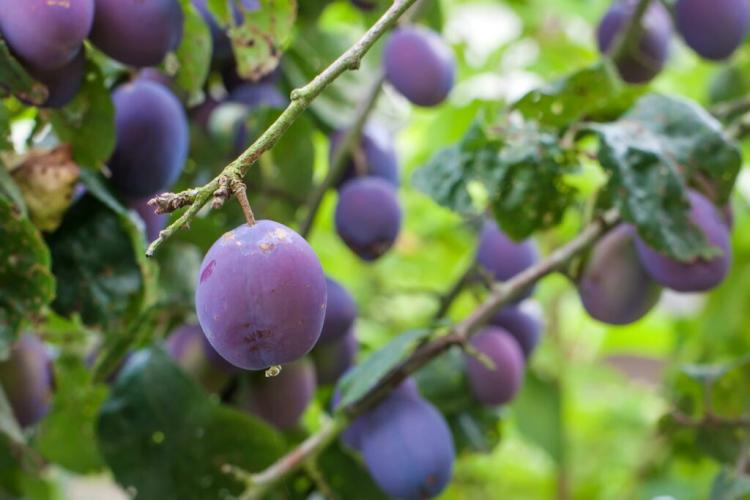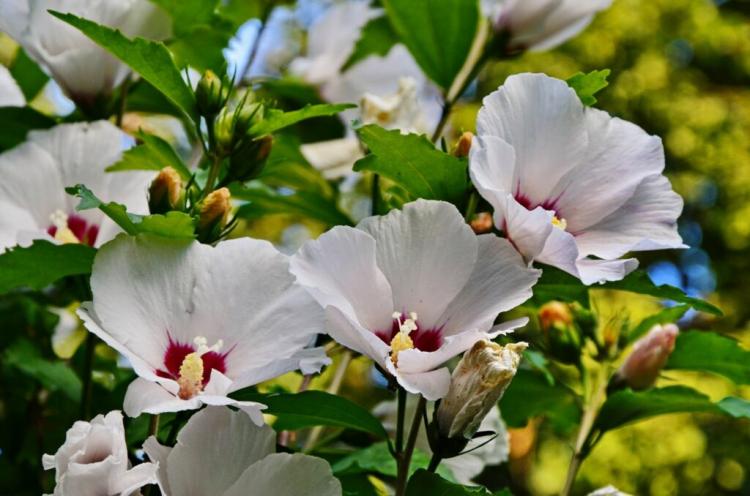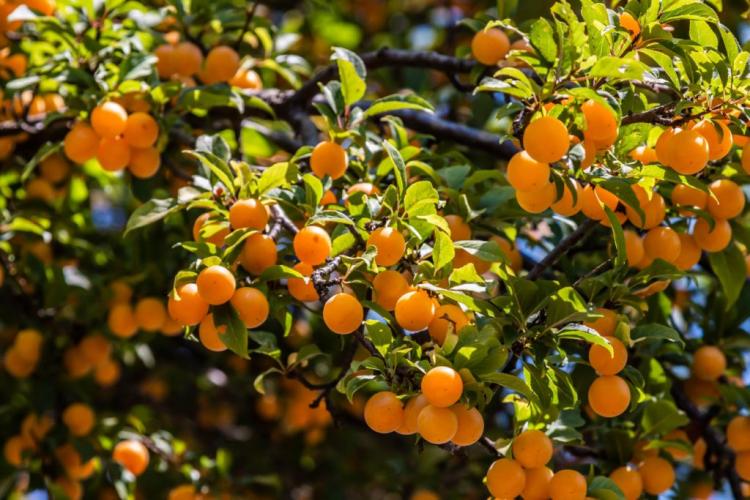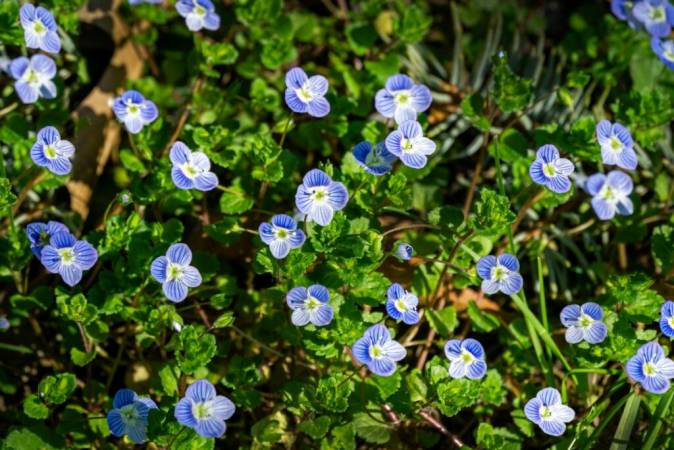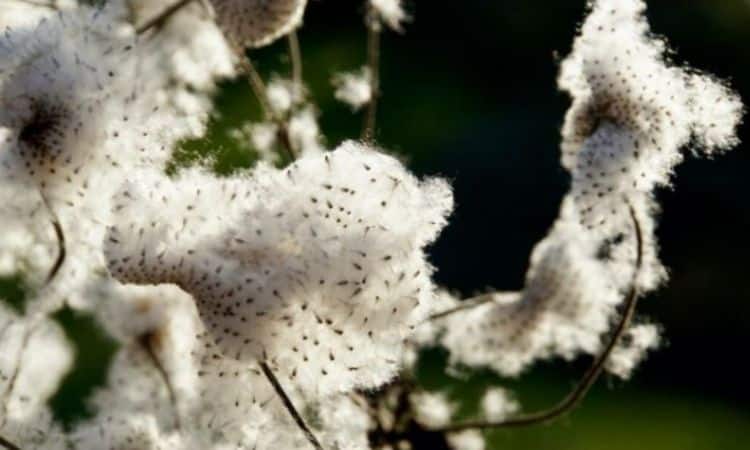Plum tree plants: instructions and tips for care
Plums, plums, and the like taste best from your own garden. We show what to look out for when planting a plum tree.
The plum ( Prunus domestica ) and its subspecies the plum ( Prunus domestica subsp. Domestica ) belong, like many other fruit trees, to the large rose family (Rosaceae). They are among the most undemanding types of fruit and also thrive very well in rougher areas. However, plums already bloom in early spring and are therefore particularly susceptible to late frosts. A suitable location is therefore essential for a rich plum harvest. In this article, we will explain to you how best to proceed when planting a plum tree and what else you need to consider in addition to choosing the right location.
Before you plant a plum tree, of course, you need to decide on one of the many varieties. You should also think about the space available in your garden in advance because the size of a fruit tree can vary greatly depending on the type and form of upbringing.
Buy plum tree as a pot or bale product
Table of Contents
Plum trees are offered as container plants or as so-called bale goods. While container plants are sold all year round and, accordingly, can also be planted if the weather permits, the bale goods are only offered and planted in autumn and early spring.
Once you have found a plum tree variety that suits you, it is best to ask the nursery about your experience with it. Above all, you should check whether the selected variety is adapted to the local conditions prevailing in your garden. If this is not the case, it is better to choose a variety that can withstand wind better, blooms later (if there is a risk of late frost), or needs less heat and light.
The best thing to do is to choose your favorite variety as a grafted fruit tree. A refined fruit tree consists of a base and a noble variety. The noble variety is your plum variety from which you will reap the fruits. The underlay has certain properties such as stability and vigor, but also certain demands on the location. Depending on how much space you have available in the garden, you can choose between weak, medium, or strong-growing from the same plum variety thanks to the underlay.
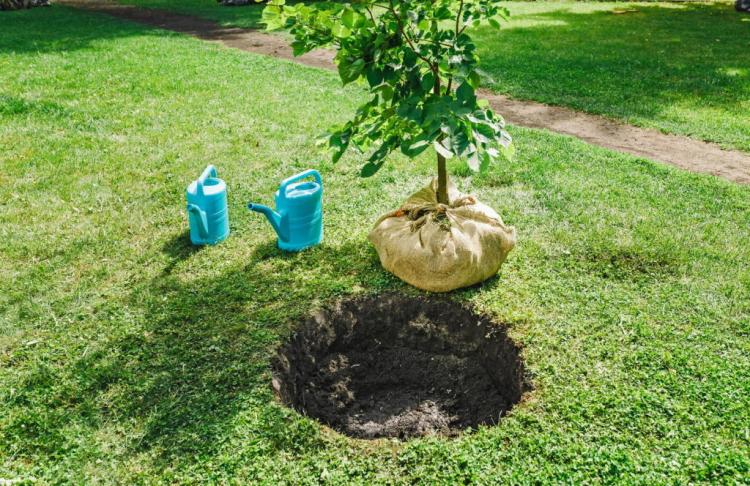
When buying your plum tree, look out for:
- Healthy roots
- An undamaged and healthy refinement point
- An evenly built crown
Planting a plum tree: when is the best time?
As with most fruit trees, the best planting date for the plum tree is in autumn. The roots can develop and spread over the winter. In spring, the plum tree can then be optimally supplied with nutrients and grow well. In a dry spring, however, one must not forget that the roots of the young tree do not yet reach far into the ground and therefore have difficulty absorbing water.
That is why young trees are always watered in the first few years if there is a long drought. As an alternative to the optimal planting time between October and November, the months of March and April are recommended. These are the times when the stress from heat, radiation, and drought is lowest for the newly planted trees. In addition, bale goods, which are usually cheaper but more robust compared to container goods, are available. However, with spring planting it is even more important to ensure an adequate water supply throughout the summer than with a tree planted in autumn.
Instructions for planting plum trees
After the successful purchase, the new plum tree is planted. Planting a tree is almost a ritual of its own: There are many things to consider and you can do a lot wrong. But with the right knowledge, planting your tree will also be successful and the next step towards harvesting plums from your own garden is made.
Materials needed to plant a plum tree
So that the planting goes as quickly as possible, it is advisable to have some utensils ready. The following equipment and materials are required:
- Spade, shovel, hoe
- Support pile, binding material
- Hammer, secateurs
- earth
- Trunk protection
The right location for a plum tree
For your plum tree to thrive and produce lots of delicious fruit, it is of great importance where you plant it. The location with the ideal growing conditions for plums is sheltered from the wind, warm and sunny. These criteria are best achieved in front of a house wall facing south, where the sun’s heat accumulates and the risk of frostbite due to late frosts is lower. In addition, the plum tree should have enough space – it should be able to spread unhindered within a radius of two and a half to three meters. Since plum trees are quite demanding, moist, humus, and nutrient-rich garden soil is mandatory. A pH value between 6 and 7 is ideal.

Dig the planting hole for the plum tree
The hole in which the tree is to be planted should be at least half the ball diameter wider than the root ball. The larger and deeper the planting hole, the easier it is for the roots to spread. The bottom of the excavated hole is loosened up about twice as deep with a hoe. So that the small plum tree has sufficient nutrients available right from the start, you can put some nutrient-rich soil in the planting hole. Mix the different layers well and, if necessary, work some primarily organic long-term fertilizer into the soil.
You might so like: Japanese Wineberry: Planting, Care And Harvest
Attach support post for plum tree
If a large tree is planted, it makes sense to put a support pole in place before actually planting it. Once the tree is in place, it can be difficult to dig the holes again with the spade and fumble with the bulky sledgehammer. The support post should be about as high as the trunk of the tree and driven in on the west side. Since the wind usually comes from this direction, the tree is pushed away from the post.
Prepare plum tree before planting
Before planting, you should carefully scratch the root ball of the plum tree all around with scissors and loosen it up a little with your hands. This measure stimulates the root branching. An additional cutting of the roots is usually not necessary for container goods. However, if the root ball is very dry, the young plum tree can be immersed in a bucket of water again before planting.
Plant plum tree
Planting the plum tree itself is best done with two people. One holds the tree in the planting hole, the other fills the hole with a mixture of excavated soil and additional nutrient-rich soil. The soil is distributed well in the planting hole by gently shaking, lifting, and lowering the tree. It is best to place the young tree so that the grafting point protrudes at least five centimeters above ground level.
Finally, water the inserted tree well. Because it is only when the soil is silted up that the earth settles well and encloses the roots. It is better not to step on the ground and if you do, then only very lightly, because otherwise, it can compact quickly and consequently tend to waterlog with devastating consequences.
You might so like: Repotting the olive tree: frequency, timing, and instructions
You can now tie the plum tree to the support pole as a windbreak. The rope should not be attached too tightly so that the tree does not suffer from constrictions. If voracious rodents do their mischief in the garden now and then, it is also advisable to attach a special protection device. If necessary, the tree grate can also be covered with mulch material, such as grass clippings or straw. This retains moisture better and dries out the soil less quickly in drought and heat.
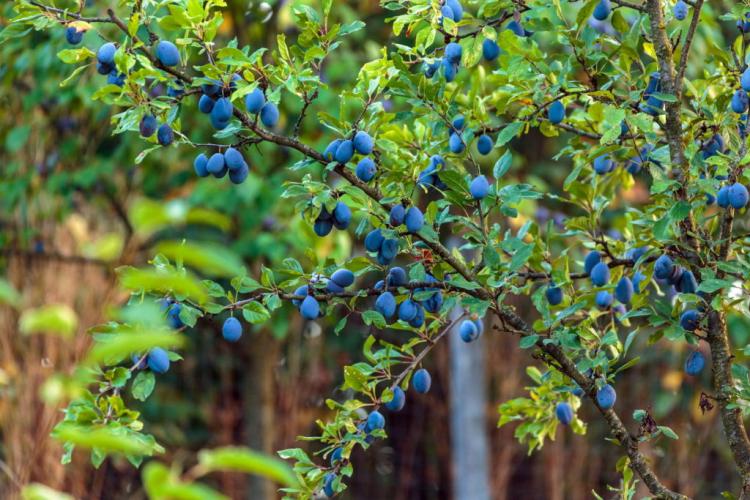
Planting a plum tree summary:
- It is best to plant in autumn (October / November)
- Selection of a warm, sheltered location
- Dig the planting hole large and deep enough
- Drive in the support post on the west side
- Enhance the soil with nutrient-rich soil
- Incorporate some primarily organic long-term fertilizer
- Score and loosen the root ball
- Place the tree and fill the planting hole with excavated soil
- Sludge well
- Tie the tree to the stake, attach anti-seizure protection and mulch if necessary
Maintain plum tree after planting
In the first few years after planting, the roots of the young plum tree are still sparse and shallow. For it to develop well, you should pay attention to an adequate water supply, especially in the beginning. Annual fertilization with compost and mainly organic long-term fertilizers can also have a positive effect on growth and yield.
You might so like: Growing Blackberry: Video Instructions And Tips From A Professional
A professional cut favors the development of the young tree. After successful planting, regular training pruning is required to direct the growth in the right direction. Later, when the tree is older, only a so-called clearing cut is carried out, in which those branches and shoots are removed that prevent the development of other shoots.
